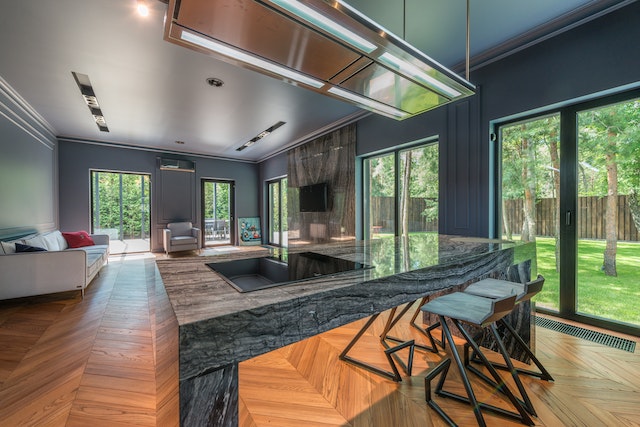One of the primary reasons for the widespread adoption of window film is its remarkable ability to reduce energy consumption. During hot summer months, windows without film allow a significant amount of solar heat to enter a building, causing indoor temperatures to rise. This, in turn, forces air conditioning systems to work harder, leading to increased energy usage and higher utility bills. Window film acts as a barrier, blocking a substantial portion of the sun’s heat and reducing the need for excessive cooling. By maintaining a more stable indoor temperature, window film not only helps conserve energy but also contributes to a greener and more sustainable environment.
Living and working spaces. Sunlight streaming through unprotected windows can create uncomfortable hot spots and glare, making it challenging to work, relax, or enjoy the view. Window film minimizes glare by filtering out the harshest rays of the sun while still allowing natural light to illuminate the room. Eclipse Tint This results in a more pleasant and productive environment where occupants can comfortably carry out their daily activities without the discomfort of excessive heat or blinding glare.

Privacy is another significant benefit provided by window film. In urban areas where buildings are often situated close to one another, maintaining privacy can be a challenge. Window film offers a practical solution by obscuring the view from the outside while still allowing occupants to see out. This feature is especially valuable for ground-level windows, bathrooms, and other areas where privacy is essential. With the application of window film, individuals can enjoy their personal space without the constant worry of being observed by passersby or neighbours.
Safety and security are also enhanced with the installation of window film. In the unfortunate event of a window breaking due to an accident, natural disaster, or attempted break-in, the window film holds the shattered glass together, preventing it from scattering and causing potential injuries. This added layer of protection not only safeguards occupants but also deters intruders, as the reinforced glass is more challenging to penetrate. For commercial properties, this security aspect of window film can be particularly advantageous, providing peace of mind and protecting valuable assets.
The protection of interior furnishings is yet another compelling reason to invest in window film. Window film acts as a shield, blocking up to 99% of harmful UV rays and significantly extending the lifespan of interior items. This not only preserves the aesthetic appeal of a space but also reduces the need for costly replacements and repairs.

Available in various shades, colours, and patterns, window film can complement the architectural design and style of any property. Whether aiming for a sleek, modern look or a classic, timeless appeal, window film offers versatile options to suit diverse preferences. The ability to customize the appearance of windows adds a unique touch to both residential and commercial spaces, elevating their visual appeal.
Furthermore, the installation of window film is a cost-effective solution compared to alternatives such as replacing windows with more energy-efficient models. This makes it an attractive option for homeowners and businesses looking to upgrade their windows without the expense and hassle of major As environmental concerns continue to grow, the demand for sustainable building practices is on the rise. Window film aligns perfectly with this trend by contributing to energy efficiency and reducing the carbon footprint of buildings. By lowering the reliance on artificial cooling and heating systems, window.





